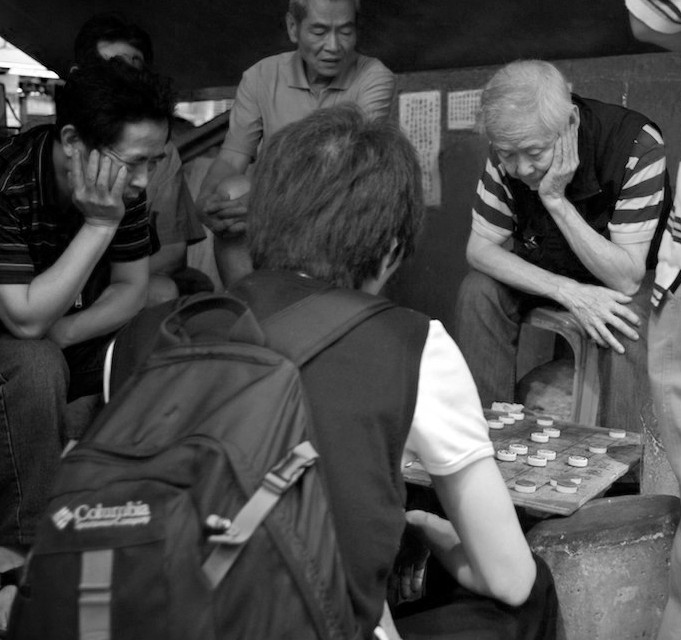Session 2: March 16
Our changing times and the complexity of human social systems
Expanding our view from solution delivery to pattern-shifting
The times: We are living in the age that Joanna Macy refers to as “The Great Turning” — a shift in every major global system, and in the experience of almost every aspect of life. And as students in the School of Design, we are learning and working in another overarching trend: people everywhere are taking design and creation of better systems and circumstances into their own hands. Professional designers are increasingly becoming partners in the work of co-design, more catalysts and amplifiers than initiators or specialist problem-solvers.
Complexity: Our education, our experience, and the limits of our human abilities all conspire to make it difficult to internalize the nature of living systems — what complexity theorists call “complex adaptive systems.” This course doesn’t aim to help students become systems scientists, but we can offer experiences and frames that may spark a new way of seeing systems, our role in them, and the challenge of creative work in social systems.
Lecture and activities
- The big story that contains us all: The Great Turning, diffuse design, and the frontier of work in complexity
- The Berkana Model as a way of thinking about long term systemic change
- Activities: social games as a way to experience complexity and emergence
- Time for reflection
- Framing our experience of complexity: how might we think about work in social systems?
Key concepts
- Something big is going on, and we’re part of it.
- The key idea for understanding social systems: it’s patterns are made of us, and our patterns are shaped by it.
- You can’t understand social systems by looking only at individuals.
- You can’t affect social patterns directly: they are emergent
- The tools of problem-solving are great, but we’re gonna need a bigger boat.
Required materials
- Marc Rettig, Notes on emergence.
medium.com/@mrettig/notes-on-emergence-5290adb48319
You don’t have to read everything, you don’t have to watch all the videos. We want you to have this as a resource, but see the assignment below which requires you to read a portion of these notes and watch one of the videos. - Video: Manuel Lima, The power of networks
https://vimeo.com/42567012 (11 minutes) - Patricia Shaw, Chapter One of Changing conversations in organizations: a complexity approach to change. 20 Pages. The PDF has a few annotations from Marc, as comments on why this reading is relevant to the course.
Assignment: See through a systems lens
STEP 1: Read this much of the Notes on Emergence: from the beginning down to the heading, “Examples and resources that might help.” You can stop reading there for this assignment (but we hope you skim the rest — there are some great videos in there!). We think you might get more out of this assignment if you also read the required chapter from Shaw before doing Step 3.
STEP 2: Watch this 12-minute video, a clip from NOVA on “Emergence: www.pbs.org/video/1511364559/
STEP 3: Pick some place on campus or around Pittsburgh (don’t do this with only your imagination, please; actually go somewhere and look), and spend a minimum of 20 minutes observing through the “lens” of what you just read and watched. In people’s movement, conversation, appearance, or something else, can you find an example of an emergent behavior and/or quality?
STEP 4: Write a one-page reflection on what you saw and what the experience was like for you. Please bring a printed copy to our next class session.
Optional materials
We say “optional” out of respect for your time, but here’s the deal: the amount you learn from this course, and the degree to which these seven weeks expand your perception of organizations, society, human relationship, your work, and yourself will be greatly increased if you make time for the optional assignments.
- Joanna Macy, Natural Heroes: Joanna Macy and the Great Turning (26 minutes) www.youtube.com/watch?v=_0QHZlQiPEM The movie starts at 1:30.
- Here is a lecture from Joanna Macy, with an introduction by her. Similar material, but less “produced” than the video above: vimeo.com/60907149
- Ezio Manzini, Design when everybody designs (80 minutes): vimeo.com/122184793
- Tsungjuang Wang, A new paradigm for design studio education.
www.cc.ntut.edu.tw/~tjwang/ijade-29-2.pdf
We are not alone in the discussions we are having in this class. You are part of a shift in design education, moving from object-focus to system-focus. Wang summarizes this nicely. This PDF contains the whole article, but the part we are assigning is from page 178 (page 6 of the PDF) to the end.
Other resources mentioned in the class session
The Berkana Model
- Deborah Frieze, Two Loops: How Systems Change: vimeo.com/17907928
- Chris Corrigan, Dynamics of complex living systems: www.youtube.com/watch?v=u1_tpzZVWTY
- Berkana Institute, Using emergence to take social innovation to scale: berkana.org/wp-content/uploads/2011/09/Emergence.pdf (PDF)
Ezio Manzini, Design, when everybody designs
www.amazon.com/Design-When-Everybody-Designs-Introduction/dp/0262028603

0 comments on “2: Social complexity”Add yours →